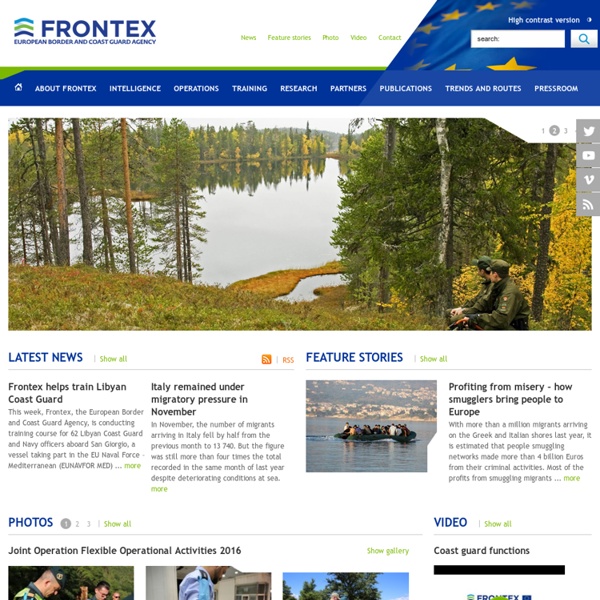



DGs - Migration and Home Affairs - What we do - Policies - European Agenda on Migration Why a new European Agenda on Migration? The EU’s external borders have increasingly been the scene of human tragedies to which the EU, together with its Member States, must take immediate action. At the same time, migration needs to be better managed in all its aspects; through this new Agenda, the EU aims at providing its Member States with tools to do so in the medium as well as long term. Migration management is a shared responsibility, not only among EU Member States, but also vis-à-vis non-EU countries of transit and origin of migrants. By combining both internal and external policies, the Agenda provides a new, comprehensive approach grounded in mutual trust and solidarity among EU Member States and institutions.
Danida: Analyse af migration og flygtningebevægelser til Europa 2016/03 A cookie is a small text file, which is placed on your computer or other devices. It makes it possible for us to recognize your computer and gather information about which pages and functions are visited with your computer. Cookies contain only anonymous information. Cookies are used by most websites and are in many cases essential for the website to work properly. U.S. Customs and Border Protection - Stats and Summaries U.S. Customs and Border Protection Snapshot - March 2016 The CBP Snapshot provides a general overview of CBP leadership, mission sets, basic statistics and more. MW48 : A summary history of immigration to Britain 1. Introduction 1.1 There have always been episodes of migration to Britain but, as this paper demonstrates, those episodes were small and demographically insignificant until the Second World War.
Unauthorized Immigrant Population Profiles Learn about the estimated 11 million unauthorized immigrants living in the United States. Where do they live? When did they arrive in the United States, and from which origin countries? What are their levels of education, top industries of employment, incomes, parental and marital status, health care coverage, and more? International migration: a recent history There is considerable interest in the impact of migration on the UK population, economy and society. Part of a series of UK Perspectives providing an overview of key aspects of the nation over the last three decades, this article presents some key statistics on flows of long-term migrants into and out of the UK, and the impact of migration on the UK population. 1. UK net migration has been positive every year since 1994 Net migration is the difference between the number of long-term immigrants coming to the UK and the number of long-term emigrants leaving the UK, and contributes to population change.
Migration Watch UK An asylum seeker is somebody who has submitted an application for asylum in another country because he or she fears persecution in the home country and is awaiting a decision. A refugee is someone who has been granted asylum. (Paragraph 3)The UK received around 40,000 applications for asylum in 2015, the highest number since 2004. (Paragraph 5).The average rate of grant in the last ten years (using cohort analysis data), including grants following appeal, is just over 50% (paragraph 9)Yet, of those denied asylum in the last ten years, just 40% were removed.
Asylum figures The national figures on asylum The Federal Office publishes data updated on a monthly basis concerning developments in the asylum applications filed in Germany, on the ten countries of origin with the highest number of applicants arriving, as well as on the decisions made by the Federal Office concerning the asylum applications, and statistical data on transfer requests that have been filed in the Dublin Procedure. The statistics also provide information on how the data have developed in comparison to previous years. In accordance with Article 4 of Regulation (EC) NO 862/2007 of the European Parliament and of the Council on Community statistics on migration and international protection, the Federal Office is the national data supplier for the European Commission (Eurostat) in the field of asylum statistics.
Migration Policy Institute The CMS Archive - The Center for Migration Studies of New York (CMS) The CMS Archive consists of more than 100 collections that document the immigrant experience in North America from the mid-19th to the 21st century. The archive is an especially rich source for Italian-American studies, offering papers of individuals from the worlds of education, entertainment, labor, politics and publishing, and the records of community organizations such as parishes and educational and historical associations. For more information or to request access to documents, please contact archives@cmsny.org.